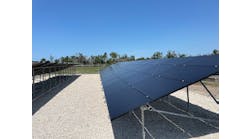Latest from Sustainability
As industries across the board ramp up efforts to make their operations more sustainable, broadband service providers (BSPs) are aggressively seeking ways to reduce carbon emissions. Since the industry is estimated to be responsible for approximately 2% of all carbon emissions—about equal to the airline industry. Thankfully, there are ways to become more sustainable by investing in clean sources of energy from the central office to remote cell towers.
At first glance, BSPs’ ability to independently reduce their carbon footprint looks quite limited. Up to 90% of all telecom emissions come from upstream and downstream activities, making many of their efforts contingent on the actions of their energy suppliers and customers. With the shift toward greater access to—and better storage of wind, solar and other types of renewable energy, driven by funding through both the Infrastructure Investment and Jobs Act (IIJA) and the Inflation Reduction Act (IRA), telecom companies should start reducing the other 10% of their emissions.
“The investment tax credit increase to 30% applies to complete solar capture and storage systems. Telcos can take advantage of the land available in rural areas to install solar panels plus battery energy storage for cell tower backup power.”
IIJA and IRA Assistance
Allocations from the IIJA include more than $7 billion to strengthen the US battery supply chain, while the IRA offers a multitude of tax credits and grants to further spur energy innovation. This includes an increase of investment tax credits to 30% for standalone energy storage systems separate from solar and wind credits which were extended for 10 years. This provides locations that are landlocked, without the area to set up large-scale energy generation systems—for example, space-consuming solar panels—to still reap the benefits of energy storage installations. BSPs are able to take advantage of the incentives for energy storage now and have the option to explore interconnectivity to renewable sources of energy in the future.
There are a number of incentives related to energy storage investments through these bills for BSPs to explore, from improving their energy efficiency and helping them use more renewable energy to changing the way grid power is backed up throughout their operations. Let’s look at two:
Powering the Central Office (CO)
Few industries understand the importance of backup power like telecommunications. When the grid goes down, we still need to be able to communicate in case of an emergency. Telecom companies are required to provide service. Many dedicate significant space at their central offices to battery-powered uninterrupted power supply (UPS), serving as a fail-safe for telecom switches in the event of an outage.
With greater demands on aging grids, it’s likely there will be more pressure on these UPS systems in the near future. While lithium may seem like an attractive option for back-up batteries, its limited availability (due to high demand from the auto industry and other industries), could hinder its large-scale feasibility for UPS.
To answer the need for alternate battery chemistries, the Department of Energy is supporting innovation for lead batteries to increase energy density and performance, through the Energy Storage Grand Challenge. Plus, with a stronger domestic supply chain for lead batteries than lithium, there’s no question about when the chemistry will be available. Telcos can move forward with upgrades now with the help of the Inflation Reduction Act’s incentivization of energy storage investments.
Another consideration for the central office: the equipment that powers the building itself, not just the servers. Currently, diesel generators are the primary source of power in the event of a grid outage, and while they’re effective, using them for even a short period of time can generate significant emissions. An advanced lead battery backup system can replace the generator, offering support during an outage while reducing the office’s footprint.
Powering the Towers
For cellular towers closer to the grid, batteries only function as backup power. But what about more rural towers? Some are too far from the grid to use it as a stable power source, so diesel generators keep these towers running in many cases.
There is an opportunity for companies to switch to battery-power-only backup for these more remote towers. Many already have lead batteries that serve as the stopgap between the power going out and the generators firing up, but advanced lead batteries and other battery technologies can supplement or even take the place of generators at towers.
This new legislation-funded investment in advances in energy storage can have a significant impact on rural communities, bringing energy resilience to these underserved areas. The investment tax credit increase to 30% applies to complete solar capture and storage systems. Telcos can take advantage of the land available in rural areas to install solar panels plus battery energy storage for cell tower backup power. Lead batteries paired with solar panels to capture renewable energy is a sustainable way to help keep cell phones working for rural communities where communication during power outages is critical for individuals and first responders.
Powerful Partners
Looking into the future, the next generation of connectivity is likely to come less through the software upgrades required for 5G, and more through the integration of technologies such as artificial intelligence into networks. This will increase the amount of power needed to run networks, which, with additional demand expected on the grid, will likely need more energy generation and battery energy storage systems to stay running.
Thankfully, many utility companies are on board with renewable energy generation, which will benefit telecom companies with facilities and towers connected to the grid. Already, more than 20% of the electricity generation in the US comes from renewables. The U.S. Energy Information Administration predicts that will increase to 44% by 2050.
The telecom industry, too, has demonstrated its desire to improve its sustainability. An industry survey shows that operators have already committed to decarbonization efforts, and many are aiming for net zero targets by 2050. Now, through the IIJA and IRA, these operators have more resources to make it happen.
With so much activity upstream and downstream responsible for these telecom companies’ emissions, this change won’t happen overnight. But by taking small steps now, telecom companies can establish a more sustainable mindset—and be ready to take advantage of cleaner energy as it becomes more widely available.
Scott Childers | VP, Essential Power, Stryten Energy
Scott Childers is VP, Essential Power, Stryten Energy. He is responsible for growing the company’s energy solutions and new technology offerings. He champions clean, renewable energy opportunities for Stryten and actively works with utilities and original equipment manufacturers to deploy long-duration, sustainable energy storage solutions. For more information, visit www.stryten.com. Follow them on LinkedIn: www.linkedin.com/company/stryten-energy/.




